|
   |
|
Page 5 |
Newsletter 128 Spring 2020 © Hampshire Mills Group |
|
Two Kent Windmills
Ruth Andrews
|
|
Draper’s Mill, Margate:
Driving round Margate, we saw this mill on the
skyline and went to investigate. It wasn’t open
(only on Summer Sundays), but the information boards
outside included this excellent diagram of the mill,
and the ancillary buildings attached to the mill,
which have survived, as has the machinery in the
mill. |
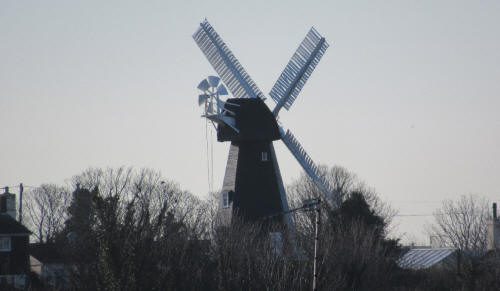 |
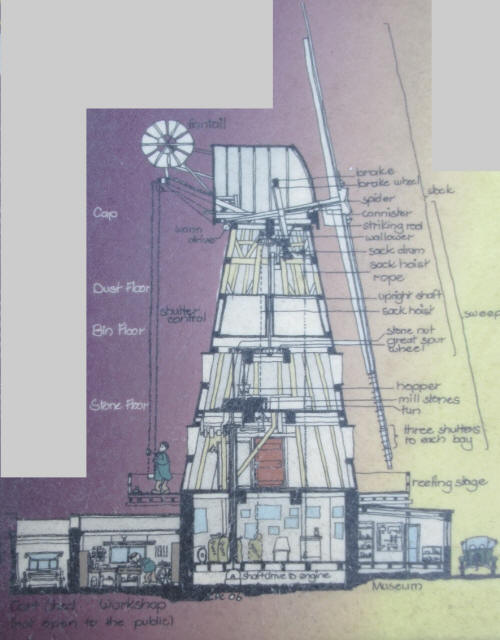
It was built in 1845 by John Holman, a Canterbury
millwright, and is the only survivor of a line of
mills which once overlooked the town. It is a
four-storey smock mill with four 26ft (8m) patent
sails driving three pairs of stones, on a
single-storey brick base with a gallery stage at
first-floor level. |
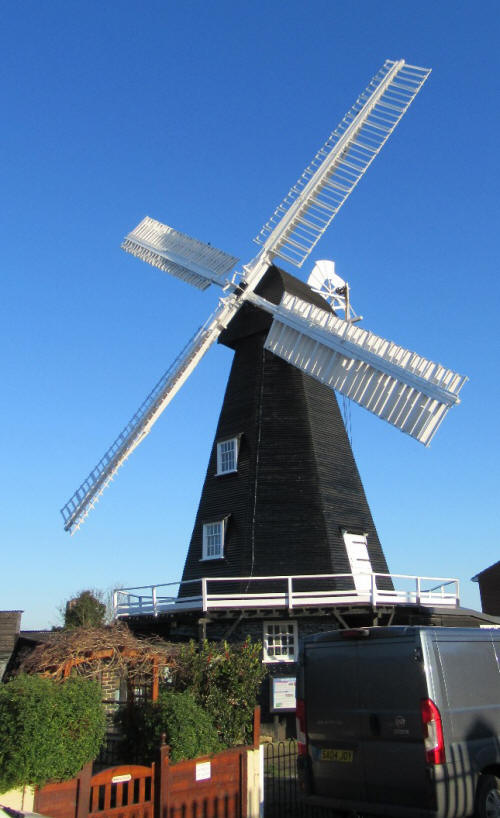 |
|
The mill was worked solely by wind until 1916 and
then by a 20hp (15kW) gas engine until the late
1930s, with the sweeps and fantail being removed in
1927. It became a depot for animal feed, coal, and
corn distribution. Its last commercial use was as
Miss Hart’s Tuck Shop, much visited by children from
the nearby schools.
Threatened with demolition in 1965, the Drapers
Windmill Trust was formed by the then headmaster of
Draper's Mills School, Mr RM Towes. In 1968 Kent
Education Committee acquired the mill, which was
restored at a cost of over £2000. It is now in the
care of Kent County Council who are supported by the
Trust, who are responsible for the running and
restoration of the mill, with larger projects
financed by the authority, and with HLF grants.
Information from the
mill’s website
draperswindmill.org.uk
and
Wikipedia.
|
|
Sarre Windmill:
Returning from Margate, we passed Sarre Windmill,
which has deteriorated considerably externally since
the 2004 photograph on the right, when it was a
prosperous working mill and tearoom. We think it
closed in 2018. Fortunately we met Adam Evans, the
keyholder, who allowed us to look inside “as we had
come all the way from Hampshire”. Internally the
mill is in good condition, weatherproof, and with no
sign of woodworm, but with lots of accumulated
clutter overlying the machinery and ancillary
equipment. The following information about the mill
is from Wikipedia.
|
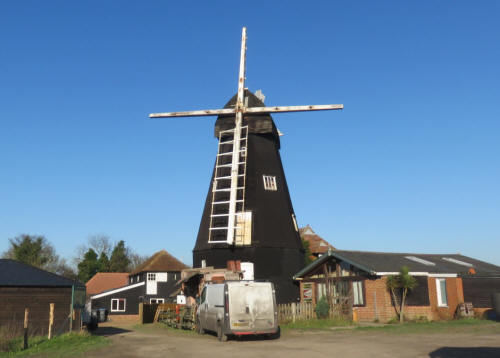
This windmill was also by John Holman, but in 1820.
Originally built with a single-storey brick base, in
1856 the base was raised to 14 feet (4.27m) high,
with an extra storey built under it. It was the
first windmill in Kent to have a
steam engine
installed as auxiliary power, added in 1861. It was
worked by wind until 1920, when the sails were taken
down, and installed on
Union Mill,
Cranbrook,
and a
gas engine
was fitted, which worked it for a few years longer.
It
ceased milling by the early 1930s. |
 |
|
After recommissioning in the late 1930s, again
powered by the gas engine, it finally stopped in
1940 as the engine had been damaged by frost. The
mill was used as an observation post during the
World War 2. It remained semi-derelict until 1986,
when restoration was started, and then worked
commercially again. |
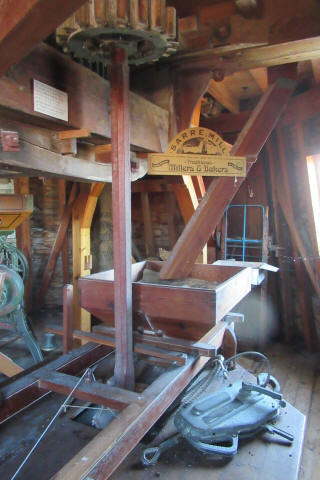
Hopper and quant,
with a portable winch on the tun |
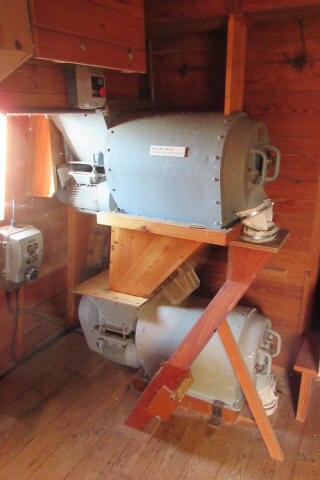
Rotary sieves
for separating bran |
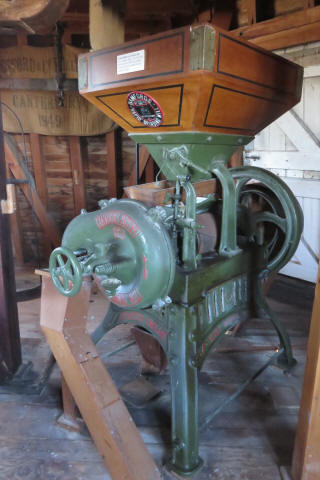
Bamfords Rapid Grinding Mill
for rolling oats
|
|
… and one in Warwickshire
Keith Andrews
|
|
Berkswell windmill
is a grade 2* listed building and a scheduled
monument. It is privately owned.
A tower mill with four sails, two patent and two
common, it was built in 1826 on the site of a former
post mill in the village of Balsall Common north of
Kenilworth. The windmill is constructed in brick
with a wooden boat shaped cap, and is turned into
the wind by an endless chain winding mechanism.
It was historically used to grind flour and animal
feeds, and in 1927 the stones were adapted to run
via a diesel engine. The mill continued to work
commercially until 1948, when it finally closed
after the last miller John Hammond died.
It was first restored between 1973 and 1975 by the
millwright Derek Ogden for it's then owners George
and Betty Field, and was complete with sails and all
internal machinery and tools for making flour and
animal feed. However, after the death of the owners
the windmill again fell into some disrepair until
purchased by the current owner in 2006. It was
restored to workable order in 2013 and is
occasionally open to the public.
Information from SPAB and
Wikipedia.
|
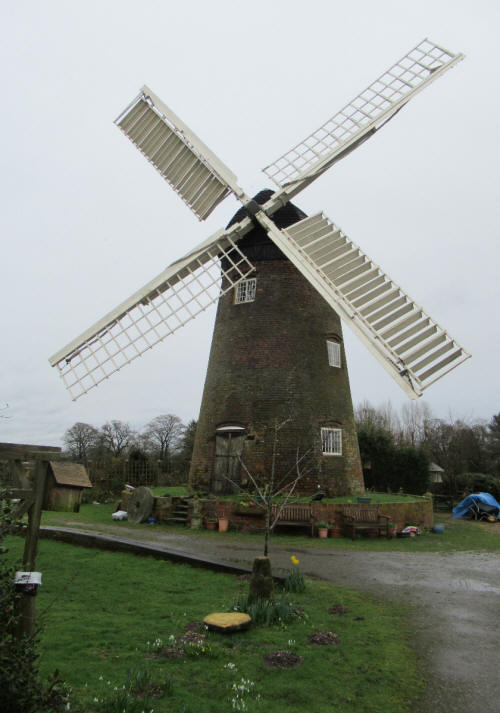 |
|
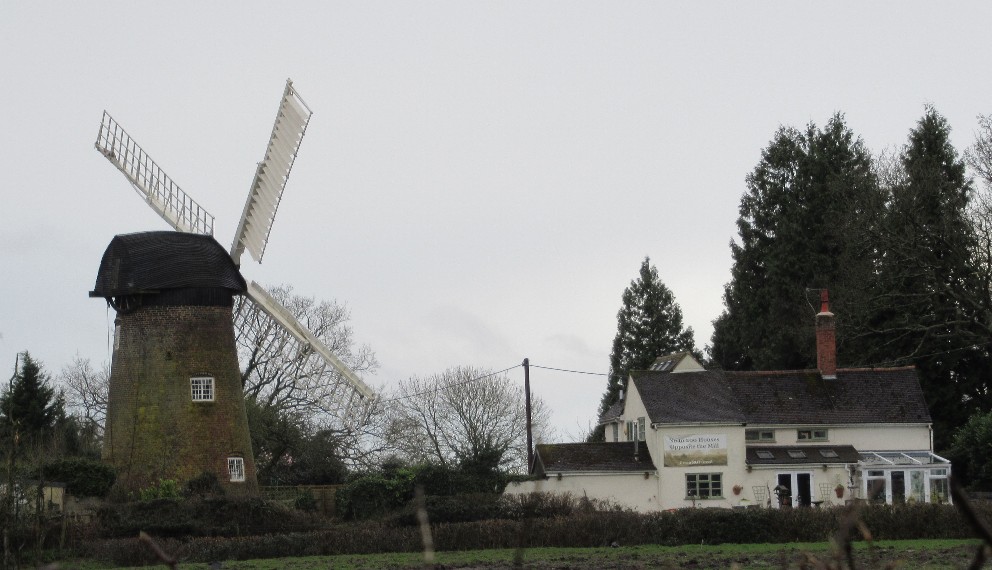 |
|
   |
|
|
